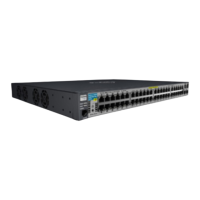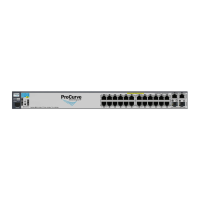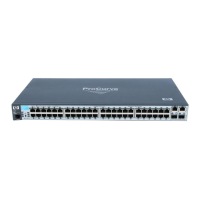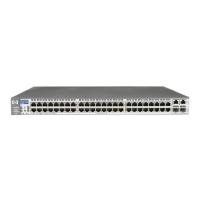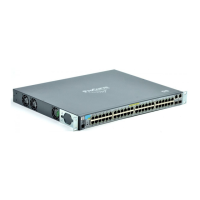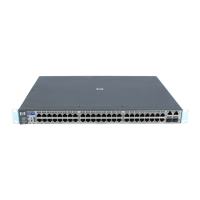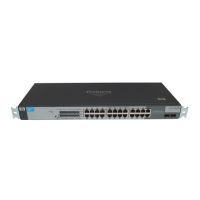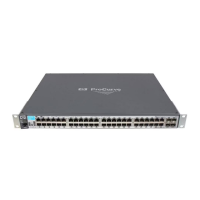B-4
Cabling and Technology Information
Twisted-Pair Cable/Connector Pin-Outs
Cabling and Technology
Information
Figure B-1. Connecting a patch cord
Make sure you purchase a patch cord that has appropriate connectors on each
end, and has multimode fibers that match the characteristics of the multimode
fiber in your network. Most important, the core diameter of the multimode
patch cord must match the core diameter of the multimode cable
infrastructure (either 50 or 62.5 microns).
Twisted-Pair Cable/Connector Pin-Outs
The Auto-MDIX Feature: In the default configuration, “Auto”, the fixed 10/
100Base-TX ports on the 2610 Switches all automatically detect the type of
port on the connected device and operate as either an MDI or
MDI-X port, whichever is appropriate. So for any connection, a straight-
through twisted-pair cable can be used—you no longer have to use crossover
cables, although crossover cables can also be used for any of the connections.
(The 10/100/1000-T ports support the IEEE 802.3ab standard, which includes
the “Auto MDI/MDI-X” feature, which operates the same way.)
If you connect a 2610 or 2610-PWR Switch twisted-pair port to another switch
or hub, which typically have MDI-X ports, the 2610 Switch port automatically
operates as an MDI port. If you connect it to an end node, such as a server or
PC, which typically have MDI ports, the 2610 Switch port operates as an MDI-
X port. In all cases, you can use standard straight-through cables or crossover
cables.
If you happen to use a correctly wired crossover cable, though, the switch will
still be able to automatically detect the MDI/MDI-X operation and link
correctly to the connected device.
To network
multimode
cabling
Mode Conditioning
Patch Cord
Gigabit-LX port
Tx
Rx
Single-mode section plugs into Tx
port on Gigabit-LX Transceiver or
Gigabit-LX mini-GBIC
The multimode cable in the patch cord
must match the characteristics of your
network cable
LC Connector
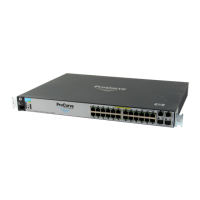
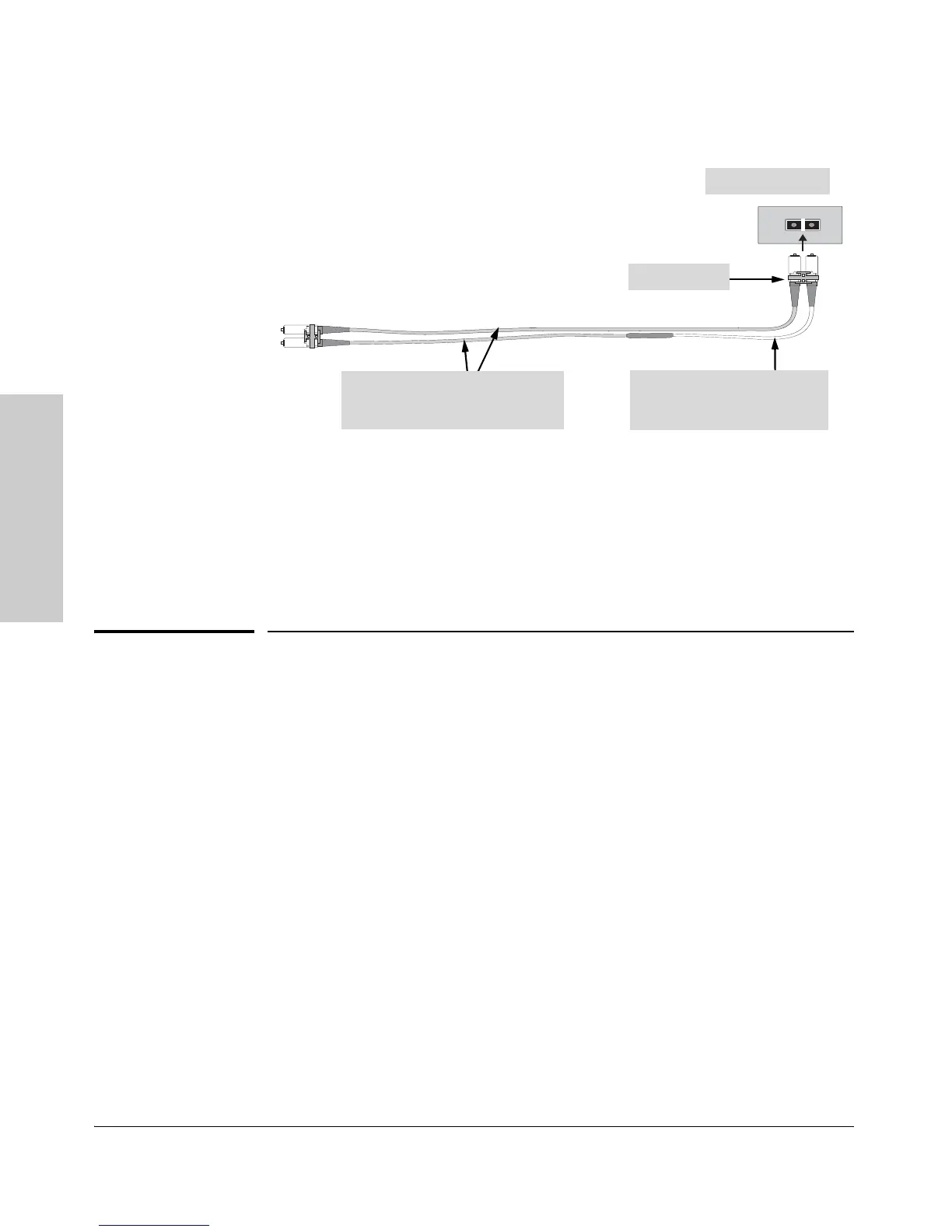